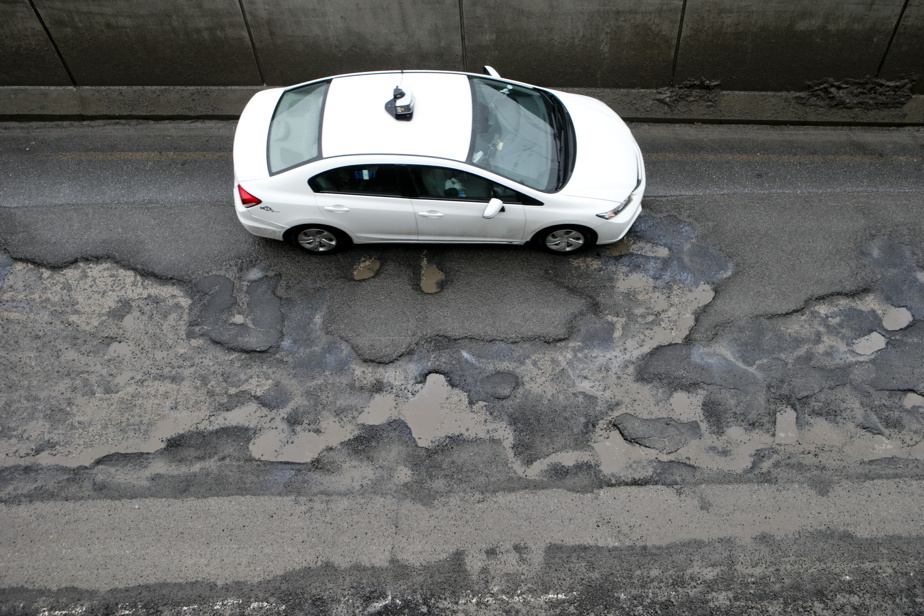(Quebec) The asset maintenance deficit, a sort of “hidden debt” of the State, continues to climb in Quebec despite record investments in infrastructure maintenance. Optimistic, the government thinks it can get things back on track.
What there is to know
What ?
The asset maintenance deficit continues to widen in Quebec
For what ?
Quebec’s infrastructure is aging and inflation is driving up the cost of work
Reaction
Public transport stakeholders denounce a budget that lacks ambition
The State estimates that 44% of roads, schools and even hospitals are in poor condition, we can read in the Quebec Infrastructure Plan (PQI) unveiled Tuesday. This is the same proportion as last year, but much more than in 2018 (31%).
CALLING ALL
Does this new budget from Minister Eric Girard meet your expectations?
Write U.S.
To establish its asset maintenance deficit (AMD), the Quebec government lists all of its infrastructures and awards them a rating from A to E. Those with ratings of D and E usually receive a DMA, i.e. “ an estimate of the value of the investments required to restore the infrastructure to a satisfactory condition or better, or to replace it,” in the words of Quebec.
The DMA of public bodies jumped by 2.2 billion in the last year, to settle at 37.1 billion in March 2024. This DMA was 34.9 billion at the PQI last year, and 30. 6 billion in 2022-2023.
Quebec explains the continued increase in this liability by the venerable age of several of our infrastructures, built in the 60s and 70s. “They have reached, or will reach in the coming years, their end of useful life which generally varies between 25 and 75 years depending on their nature,” we can read in the PQI. Roads and schools are particularly affected by this aging.
The government also points to inflation. “The window that we had to change five years ago, today costs more,” said the Minister responsible for Infrastructure, Jonatan Julien.
Record investments
Quebec, however, is reassuring: the State believes it can reverse the trend and reduce the proportion of infrastructure in poor condition from next year. Its projections – ambitious – therefore plan to go from 44% of infrastructure in poor condition this year to 31% in 10 years. Even its most pessimistic scenario predicts improvement by 2034 (41% in poor condition).
But the State will have to dig into its pockets to get there. The PQI also plans unprecedented investments of 153 billion in a decade, or 3 billion more than last year.
Of this total, 87.6 billion over 10 years are planned for “maintaining the park”, a record. This expense is not trivial. In last year’s PQI, Quebec predicted that 60% of infrastructure spending over a decade would go to maintenance. This proportion now rises to 62% this year. This therefore means that our old infrastructure weighs more and more in the PQI.
Roads before collective transport
Between last year’s PQI and this year’s, the money planned for roads over ten years increases by 3 billion (from 31.5 billion to 34.5). The amounts planned for public transport have not changed one iota (12.8 billion).
“We notice that the increase of 3 billion in total PQI is swallowed up in the road network,” notes Colin Pratte, researcher at the Institute for Socioeconomic Research and Information (IRIS). “It’s indicative of the government’s vision for public transportation,” he adds.
Trajectoire Québec denounces the absence of “structuring measures for public transport”. For the Regional Metropolitan Transport Authority (ARTM) “the impasse remains” regarding the financing of public transport. “In this worrying context, we have called a special meeting of the board of directors to evaluate the different options,” said the ARTM.
